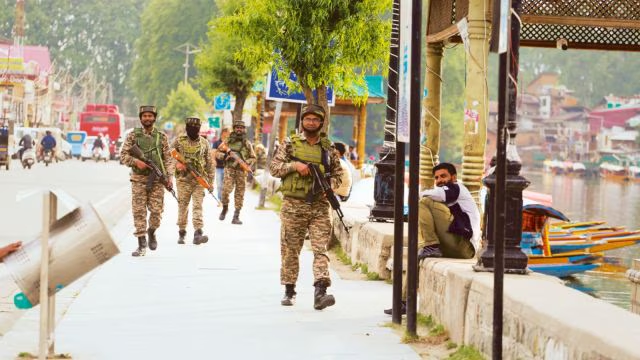The security establishment and the government are learnt to have received advance intelligence inputs about a possible attack targeting tourists staying in hotels in and around Srinagar days before the Pahalgam massacre in which terrorists killed 25 tourists and a local, officials aware of developments said.
The officials said, given the threat of an attack, there was a heightened security presence in the foothills of the Zabarwan range overlooking the Dal lake and the Mughal Gardens in Srinagar.
“The police brass, including the Director General of Police, had camped in the Valley for a few days before the attack,” said a top official who did not wish to be named.
“They (security agencies, including the J&K Police) had intelligence. They were anticipating an attack. They thought it would be a hotel on the outskirts of Srinagar… because civilian killings have happened mostly in south Kashmir,” the official said. Hence, combing operations were undertaken around Dachigam, Nishat, and adjacent areas over 10-15 days preceding the Pahalgam attack.
These did not yield any breakthrough, the official said.
A source in the J&K Police, however, said the intelligence inputs were not specific, and came to light only after the incident, and one “must not read too much” into these.
The officials, who did not wish to be identified, said the security establishment is now certain that four terrorists carried out the Pahalgam attack, and two of whom were from the Valley.
“We could verify this after the identities of the suspects were matched with details of Kashmiris travelling to Pakistan via the Attari border… The two from south Kashmir had crossed over to Pakistan, but there was no record of their re-entry. They likely returned to India from the Kathua side in Jammu,” said the official.
What’s also now known, the officials said, is that these two local terrorists “mingled” with the tourists before the attack commenced. They herded the tourists to a food court complex, where the other two terrorists, suspected to be from Pakistan, fired at them at close range, the officials said.
“The terrorists were in and around Baisaran for 4-5 days, and this could not have happened without some element of local support from certain people in the area,” the official said.
Intelligence had also picked up signals of wireless chatter, suggesting these terrorists were in and around the place.
But the intelligence couldn’t gather the conversation of these terrorists, given the communication sets being used by them.
There is concern in the government over the possibility of armed terrorists “moving around.”
Security forces have recovered advanced weaponry such as sniper rifles, M-series rifles, armour-piercing bullets from encounter locations — many suspected to be left-over ammunition of NATO troops in Afghanistan.
Officials underlined that the outpouring of anger and anguish from local Kashmiris after the killings was “spontaneous.” Political parties joined in only subsequently. “In fact, it was for the first time that a special session of the Assembly was called for expressing sympathy… and the Speaker sought out from the administration names of all 26 killed for obituary references,” the official said.
The officials said some lessons must be learned from the past, referring to how the Union government had framed the return of normalcy to growing tourism and record tourist inflow.
“Ghulam Nabi Azad had used tourism as an index or marker of peace in the past… terrorists attacked a bus shortly after. In May 2006, four tourists were killed, and six were injured when a bus carrying tourists from Gujarat was attacked in Srinagar,” the official noted.

